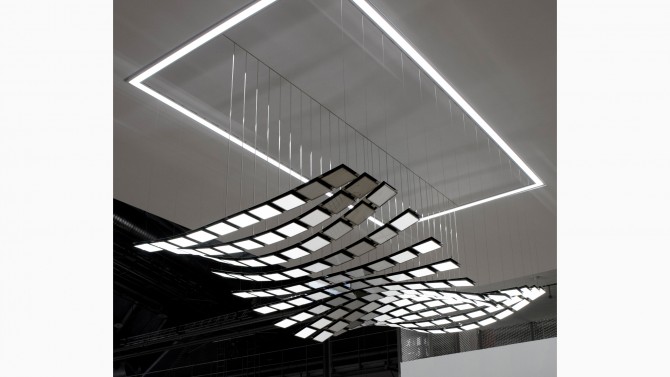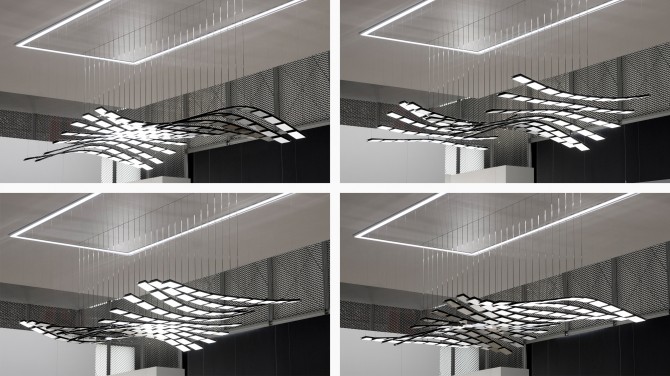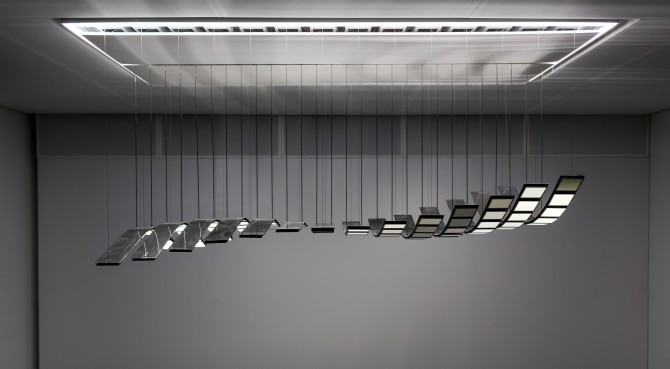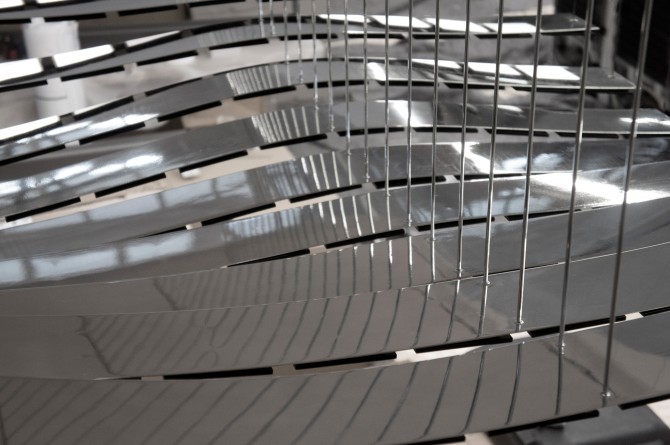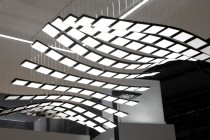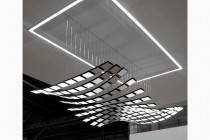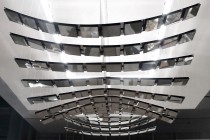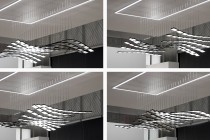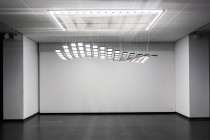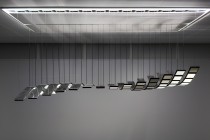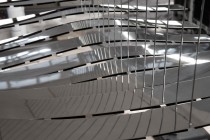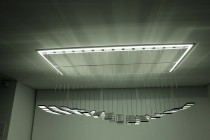Manta Rhei, 2012
Berlin, Germany
Manta Rhei combines choreographed light with physical movement for a kinetic light sculpture that has a strong poetic and performative spatial presence. Using organic light-emitting diodes, it is a contemporary addition to the genre of kinetic light objects that blurs the boundaries between natural and artificial, animate and inanimate.
The current version of Manta Rhei consists of fourteen flexible, metal lamellae of 1.2 metres, each of which carries ten paper-thin OLEDs. The lamellae are suspended from the ceiling with a metal rod. Thin steel wires are connected to individually controllable motors that raise and lower the ends of each lamella, allowing various movement patterns to be performed.
Different sequences of moving lamellae and animated light have an effect on how the sculpture is perceived. Depending on the space and situation, Manta Rhei can perform a wide spectrum of patterns ranging from harmonious to more conflicting. The changing ‘behaviour’ evokes the impression of an animated object with a certain degree of autonomy.
The kinetic sculpture seems to hover silently in an intermediate space between the ceiling and the ground. Due to its modularity it can be expanded to a kinetic environment. Through the performance of light and movement Manta Rhei shapes and interacts with space.
Mantha Rhei is a joint project with Selux. Research and development in the context of Manta Rhei was partly co-funded by the European Union via the European Regional Development Fund (ERDF).

